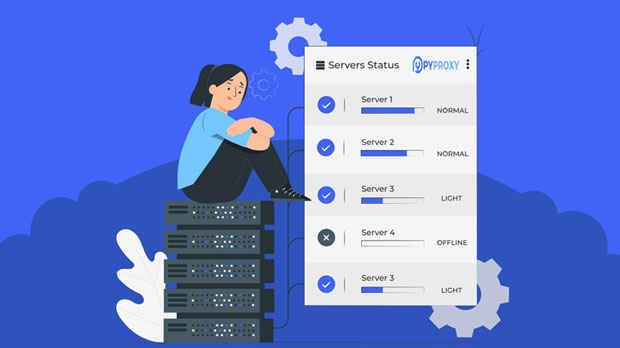In the realm of internet security and anonymity, socks5 proxies have become one of the most widely used solutions. With a variety of socks5 proxy providers offering different packages, selecting the one that provides the best value for money can be challenging. To help consumers make an informed decision, this article explores the factors that contribute to high-value packages, including cost, speed, reliability, and the range of features offered. By analyzing these aspects, we will identify which types of SOCKS5 proxy packages offer the best performance and flexibility for users with varying needs. Understanding SOCKS5 Proxies and Their BenefitsBefore diving into the details of specific packages, it's important to understand what SOCKS5 proxies are and why they matter. SOCKS5, or Socket Secure version 5, is a type of proxy server that routes network traffic through a remote server to mask the user’s real IP address. Unlike traditional HTTP proxies, SOCKS5 supports all types of traffic, including TCP and UDP, making it a versatile choice for a wide range of applications such as online gaming, streaming, and secure browsing.SOCKS5 proxies are especially beneficial for their anonymity and speed. They can be used to bypass geo-restrictions, unblock websites, and maintain privacy while browsing. Additionally, SOCKS5 offers better performance compared to its predecessors, such as SOCKS4, due to enhanced security features like authentication and the ability to handle both IPv4 and IPv6.Key Factors in Determining Value-for-Money SOCKS5 PackagesWhen evaluating the value of a SOCKS5 proxy package, several key factors should be considered to ensure it meets the needs of the user without overpaying for unnecessary features. These include:1. Price and Subscription Plans The price is often the first thing users consider when selecting a SOCKS5 proxy service. A good value package should offer competitive pricing without compromising on the quality of service. Subscription plans typically vary by the length of the contract (monthly, quarterly, or annually), with longer-term plans usually offering better value. Users should also look for tiered pricing options based on usage needs, such as the number of concurrent connections or bandwidth requirements.2. Server Locations and Global Coverage The number of server locations offered by the provider plays a crucial role in determining the proxy’s flexibility and performance. For users looking to access content from different regions, having servers in a wide range of countries is an essential feature. The more server options available, the easier it will be to switch between locations to avoid congestion and maximize connection speeds.3. Speed and Performance Speed is a crucial factor in the overall value of any SOCKS5 proxy. A slow connection can negate the benefits of using a proxy in the first place. To ensure value for money, customers should look for services that provide fast and stable connections. This includes evaluating metrics like latency, data transfer speeds, and the overall reliability of the network infrastructure.4. Security Features Security is paramount when using a proxy. While SOCKS5 proxies are generally more secure than their predecessors, additional features such as encryption, authentication, and protection against DDoS attacks can further enhance safety. A high-value SOCKS5 proxy package will include robust security measures that ensure user data is protected from cyber threats.5. Customer Support and Reliability A responsive and helpful customer support team is essential when dealing with any service provider. A high-value package will include 24/7 customer support via multiple channels, such as live chat, email, or phone. In addition, reliable uptime guarantees are crucial for users who need constant access to the proxy network.Top Considerations for Different User NeedsDifferent users have different needs when it comes to SOCKS5 proxies. Therefore, it's important to evaluate the value of packages based on specific use cases.1. For Streaming and Unblocking Content Users who are looking for SOCKS5 proxies to stream content or bypass geo-restrictions will prioritize speed and a large selection of server locations. A package that offers high-bandwidth servers in regions with popular streaming services, such as the United States, Europe, and Asia, will provide the best value for these users. Additionally, support for streaming platforms that may block proxy traffic should be a consideration.2. For Secure Browsing and Privacy Users concerned with privacy and anonymity will be looking for packages that emphasize strong security features, such as encryption, DNS leak protection, and reliable authentication methods. For these users, it’s important that the SOCKS5 proxy maintains a no-logs policy to ensure that their browsing activity is not stored or tracked. In such cases, the value of a package is determined by its ability to safeguard personal data while maintaining fast and uninterrupted connections.3. For Businesses and Enterprise Use Businesses or users with high-volume needs, such as digital marketers or cybersecurity professionals, should focus on packages that provide scalability, multiple concurrent connections, and the ability to manage large amounts of traffic efficiently. Here, reliability, uptime, and the ability to customize the proxy network are crucial. Additionally, value is often linked to the customer support provided for enterprise-level users, which may require dedicated account managers or specialized assistance.4. For Gamers Online gamers often need SOCKS5 proxies to reduce latency, avoid DDoS attacks, or bypass region-locked content. For gamers, the best value packages will feature low-latency servers, especially in key gaming regions such as North America, Europe, and Southeast Asia. Reliability during peak gaming hours and protection against DDoS threats are additional factors that will determine the overall value of a package.Evaluating Customer Reviews and FeedbackAn often-overlooked factor when choosing a SOCKS5 proxy service is customer feedback. Reading reviews and testimonials from other users can provide valuable insights into the actual performance and reliability of a package. While marketing materials can make any service look appealing, real-world experiences from users who have tested the service can reveal hidden strengths and weaknesses. When evaluating reviews, look for consistent mentions of strong speeds, customer support, and security features.Conclusion: Getting the Most Value from Your SOCKS5 Proxy PackageIn summary, finding the best value SOCKS5 proxy package requires a careful balance of factors such as price, server locations, speed, security, and customer support. By considering the specific needs of the user—whether for streaming, secure browsing, business use, or gaming—it's possible to identify packages that offer superior value without compromising on essential features. Always ensure that the service provides the reliability, performance, and security necessary for your specific use case. Comparing different options, reading customer reviews, and evaluating the service's reputation will further help in making an informed decision that offers the best value for money.
Jan 09, 2025
![arrow]()




























































